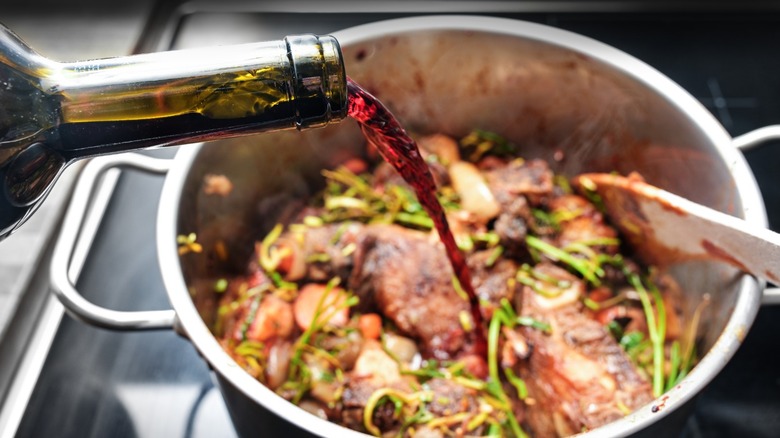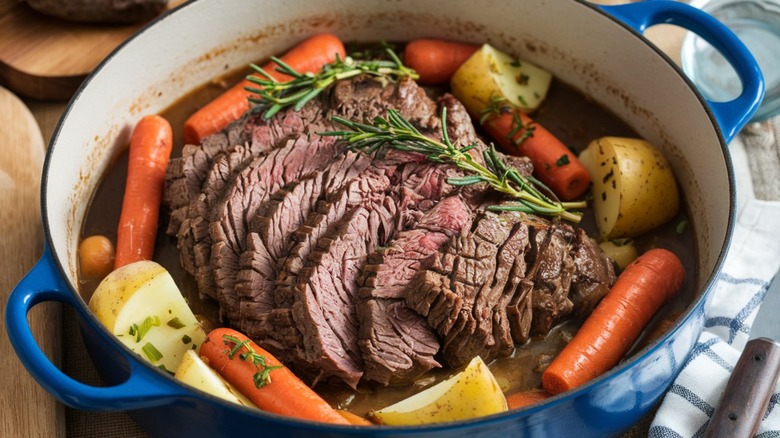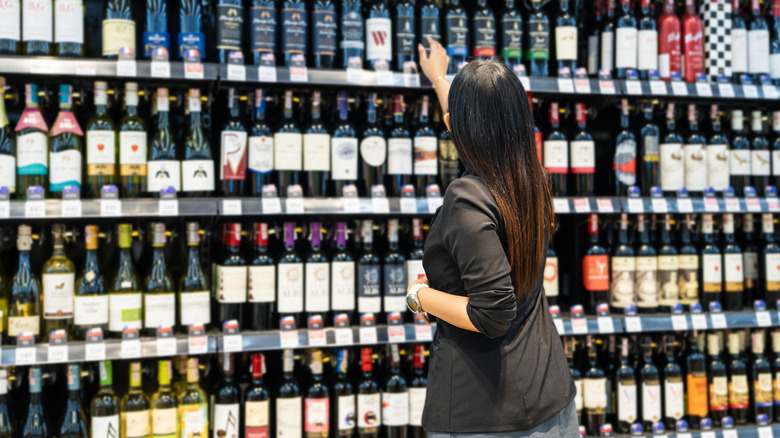Don't Throw Out Old Wine — Use It For Braising Instead
If you're thinking about tossing an old, half-used bottle of wine, think again. To find out more, we reached out to Brian Streeter, Executive Chef at Cakebread Cellars. "Cooking with wine is a great way to bring brightness and acidity to a dish," said Streeter. "And honestly, it's one of the best uses for a bottle you didn't quite finish. If the wine still has some life to it, it can do wonders in the kitchen." Streeter shares his tips and tricks during Cooking with Cakebread classes and Vine & Dine virtual cooking classes offered through Home Ec.
After a wine is opened and comes into contact with oxygen it begins to oxidize and the flavors and aromas slowly start to fade. "If the bottle you're using is a bit on the older side, I'd lean toward using it in a braise," Streeter continued. "They are a little more forgiving — something that's going to simmer for a few hours can handle a wine that's a bit past its prime better than a quick pan sauce, which really requires that signature freshness for a lift."
How to braise meat with wine
Braising isn't rocket science, but it does require a bit of preparation and patience. "With braising, the first step is typically searing your protein and getting that nice brown glaze on the bottom of the pan," said Streeter. "That's called the fond. It's where a lot of flavor depth comes from and it's the secret to making your dish taste more cohesive," Streeter explained. "Incorporating the fond into your dish happens through a method called deglazing, which is adding a liquid to your pan while it's still hot and scraping the bottom."
Old wine plays an integral part in the deglazing process. It helps release the flavorful brown bits from the pan and adds a deeper layer of body and balance to your chicken, beef, or pork. "It adds complexity and brightness, and keeps things from being too flat," Streeter shared. As the protein simmers for several hours, the wine imparts flavor into the meat, seasonings, and stock. Toward the end of the cooking process, taste the braising liquid. If you notice the acidity is missing, add some before serving. "Lemon juice works great or a splash of vinegar will do the trick if you go easy with it. Even ingredients like capers or olives can help lighten things up and add a little salinity."
Wines to avoid cooking with
The best way to tell if an old wine is viable for cooking is to pour some into a glass, give it a good sniff, then give it a small taste. "If the wine doesn't smell fresh or the fruit flavors seem flat, dried out, or kind of raisin-y or pruney, it's probably past its prime," Streeter said. However, it's still useful for braising meat for a few hours. If you're hoping to make a pan sauce, use a wine that's been open for 48 hours or less. "As long as it still tastes good, go for it. But I wouldn't recommend using a wine that's been sitting out for several days in a pan sauce," he said. "Once it starts to lose its fruit and go dull, it doesn't bring the freshness a pan sauce needs."
The other tip that Streeter shares is to cook with wine you enjoy. "The rule of thumb I always go back to is this — if you wouldn't drink it, don't cook with it." Consider cooking beef with a dry, bold red wine (like Cabernet Sauvignon) and use lighter reds (like Pinot Noir) for braising pork. Acidic Sauvignon Blancs or buttery, oaky Chardonnays pair well with poultry and seafood.
There's one type of wine Streeter avoids cooking with. "The only wines I wouldn't bother with at all are those 'cooking wines' from the grocery store. They're usually loaded with salt and not something I'd ever recommend."


